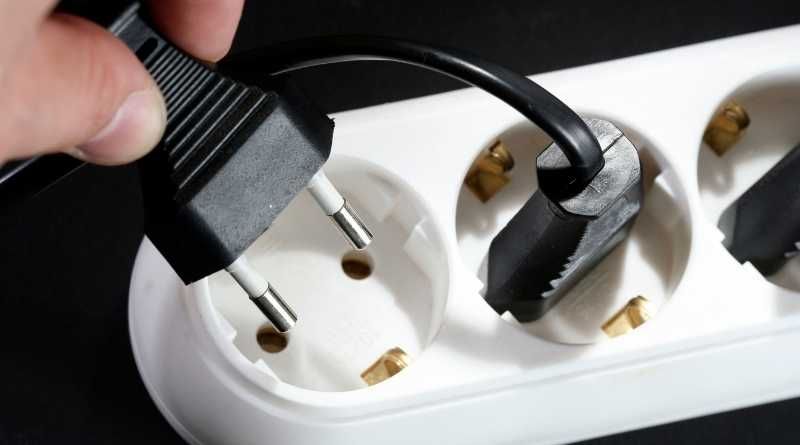As we all know that we use our devices with lots of power, so we need to have a power surge protector in our home. If you are a tech-savvy, you will be aware of the importance of surge protector for your workspace. There is an ongoing debate whether using a surge protector with your home WiFi Router is a good idea or not.
The popular belief is that surge protectors don’t affect your WIFI. But is this true in all cases?
A surge protector doesn’t affect the WiFi network it protects. It works as a safety net to protect your devices from power surges, spikes, and lightning strikes. There is no harm in using a surge protector with your WiFi router.
However, it may affect it in some different ways. One of the biggest considerations with surge protectors and how they affect your wifi is the fact that they are splitters. This means that each port will split the incoming power to all the devices plugged into it. This also means that the surge protector itself can be a weak point in the signal which will affect the wifi.
Table of Contents
Effects of Surge Protectors on WiFi Signals
You have probably wondered whether surge protectors damage our WiFi signals. There is a lot of speculation online, but relatively little discussion of how surge protectors really affect WiFi signals. I decided to do a bit of research to know how surge protectors can affect your Wifi Signals.
Interference
WiFi works by creating a radio frequency, similar to that used in AM/FM radio, to transmit data wirelessly over long distances. This process is disrupted when devices sharing the same space are not coordinated with the same frequencies. In this instance, a WiFi router and other appliances can interfere with one another. This makes it difficult for the router to send a clear signal to all of its shared frequencies.
Lower/Slower Bandwidth
A surge protector is an electrical device that protects against sudden voltage increases in the electrical power supply. Having a surge protector is crucial to having a well-functioning Wi-Fi network. However, typical surge protectors can cause significant bandwidth reduction as a result of unnecessary signal interference and degradation.
The WiFi signal is not only limited by the absence of devices with such capabilities, but also by how well protected your wires are. If you’ve got a lot of wires, each one could affect it. They all generate a certain amount of electromagnetic interference (EMI), which can be converted into heat and noise.
Increase Ping Rate
Well, it’s not that simple. There are many factors that contribute to the ping rate: The speed of your internet connection, the distance of the router from where you use the WiFi, and other electrical appliances being used in your home (HDD, refrigerators, etc.). Many devices plugged into surge protectors or power strips interfere with WiFi. This can cause internet traffic to lag, ping rates to rise, slower speeds, and even dropped connections.
Greater Amount Of Noise Or Signal Fading
Although we cannot hear it, most Wi-Fi signals are extremely weak. The average Wi-Fi data rate is only 6 megabits per second (Mbps)—much less than the 40 Mbps for an Ethernet cable and much less than the 54 Mbps maximum bandwidth WiFi can handle. Noise from electrical or electronic circuitry can interfere with wireless signals. Surge protectors are widely used to protect electronic equipment such as computers, televisions, and appliances against power surges which can damage electronic devices. However, surge protectors can adversely affect a network’s performance due to the broadcasting of radio frequency (RF) noise that interferes with other electronics.
Best Place To Put Your Surge Protector To Prevent WiFi Signal Interruption?
If you’re outfitting your home or office with a new surge protector, make sure to put it in the right place. A surge protector can help protect your computer, laptop, modem, and other electronics, but the location you choose can affect how effective that protection is.
Protecting your electronics against these surges is a must. So, where should you put your surge protector?
The best place to plug in your surge protector is the power strip under your desk. Then you can easily use your surge protector and not have the empty space when it is unplugged.
Place your Surge Protector under your desk to protect your devices from voltage fluctuations with minimal Wi-Fi Interference.
Plug the surge protector into a power strip located under your desk and plug all of your electronics into the surge protector. This will ensure that you are protected from voltage fluctuations while eliminating any excess cords tying up space on your floor.
Conclusion
In conclusion, surge protectors can affect our wifi in the sense that it is less effective. With that said, this is mostly due to the outdated nature of surge protectors and most recent models do not have this issue. There are also some special cases with the special types of surge protectors like the ones found in hospitals and airports. There are some that can affect wifi due to their location inside structures like hospitals, shopping malls or airports, but they’re actually not true surge protectors.

